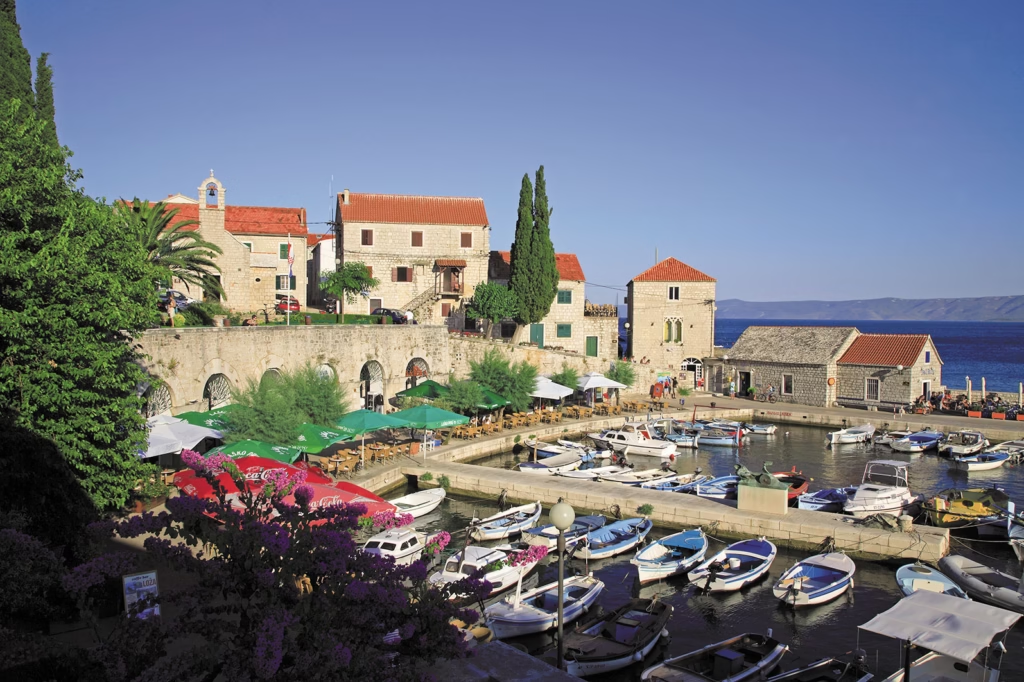Brač, with an area of 394.6 km², proudly holds the title of the largest island in Dalmatia. Like a mighty ship anchored in the heart of the picturesque Dalmatian archipelago, it has for centuries stood firm against the winds and waves, guarding its lush nature and rich heritage. Scattered along its shores and across its interior are some twenty settlements, yet among them, one stands out – in both heart and history – the renowned Bol.

Bol is a place of remarkable uniqueness. The first and oldest town on the island’s coastline, it was not founded like most seaside settlements in the safe embrace of amphitheatrical coves, but rather boldly set apart on the island’s open southern shore. There, along a string of pebbled beaches that line up like pearls on a necklace, it spreads where the deep blue sea meets the sun-warmed stone. Towering above is the majestic ridge of Bolska Kruna, the fortified Koštilo with its Illyrian hillfort, and Vidova Gora – the roof of the Adriatic and the pride of the entire archipelago.
The very name Bol reveals layers of history and the meeting of cultures. It derives from the Latin word vallum, meaning “earthwork,” “embankment,” or “fortified settlement.” Interestingly, the Latin vallum carries the same meaning as the old Croatian word obala in its sense of “rampart” or “earth wall.” It is believed that the present-day name emerged from the intertwining of the Romance vallum and the Slavic obala, a linguistic embrace of two traditions.
Historical records attest to Bol’s longevity. It was first mentioned as a locality in 1184 in the Povaljska Charter, drawn up in the building of the former Bishop’s Court, now the Dominican Monastery. As a settlement, Bol is first officially recorded on October 10, 1475, in the deed by which Prince Zacharia granted the Glavica peninsula to the Dominican Order. Thus began a chapter of history that would shape the spirit and identity of this unique place, making it a symbol of courage, beauty, and the timeless bond between people and the sea.
